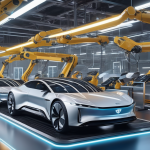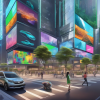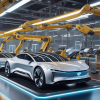Inside the World of Smart Cities: How AI and IoT Are Transforming Urban Life
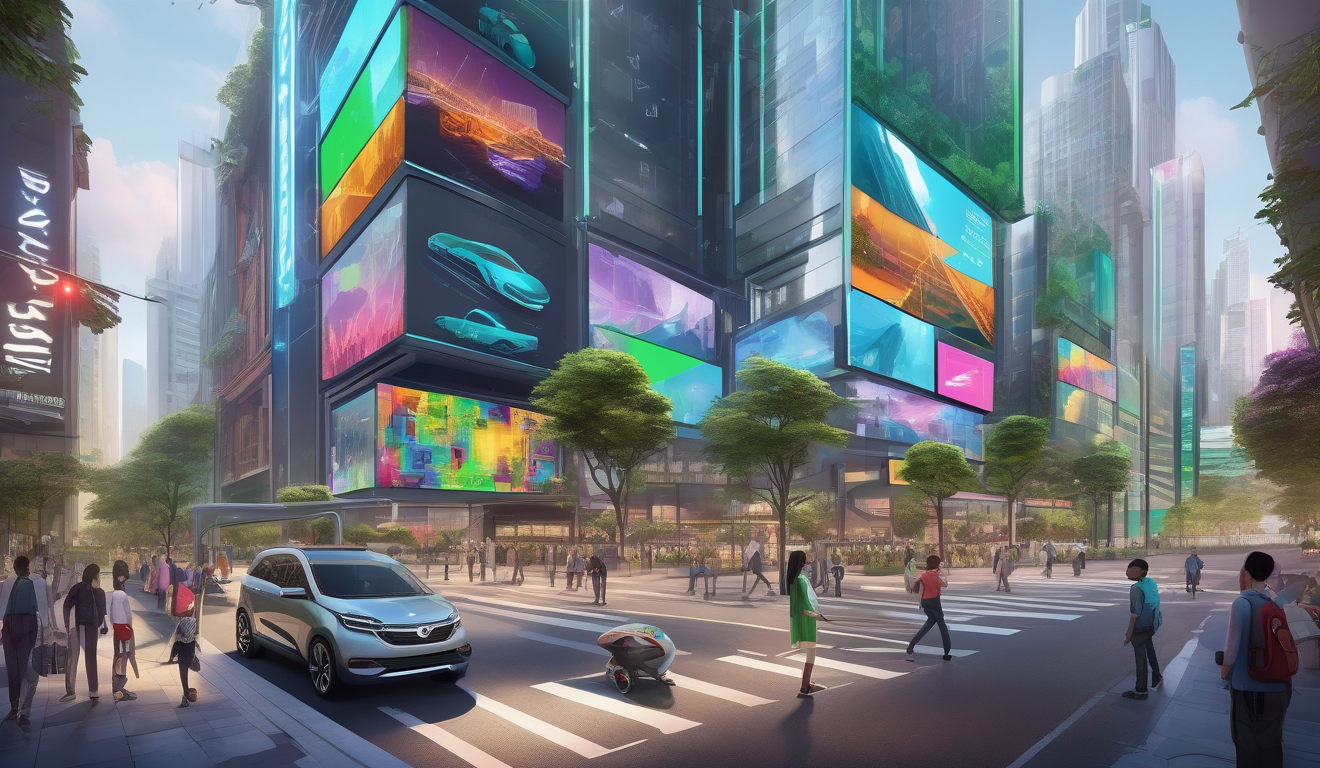
Welcome to the future of urban living! Smart cities are not just a concept anymore; they are rapidly becoming a reality, reshaping how we interact with our environment. Imagine a city where traffic lights communicate with vehicles, where energy consumption is optimized, and where waste is managed efficiently—all thanks to cutting-edge technologies like Artificial Intelligence (AI) and the Internet of Things (IoT). These innovations are not only making urban areas more efficient but are also significantly enhancing the quality of life for residents.
So, what’s driving this transformation? As urban populations swell, cities face unprecedented challenges such as congestion, pollution, and resource management. Smart cities emerge as a beacon of hope, leveraging technology to tackle these issues head-on. By integrating AI and IoT into city infrastructure, we can create environments that are not only more livable but also more sustainable. The benefits are immense:
- Enhanced Efficiency: Streamlined operations and services lead to reduced costs and improved public services.
- Environmental Sustainability: Smart technologies help minimize waste and reduce carbon footprints.
- Improved Quality of Life: Better resource management means happier, healthier residents.
As we dive deeper into this article, we will explore the specific technologies that are transforming our urban landscapes and the profound implications they hold for city management and services. From predictive analytics that optimize traffic flow to IoT devices that connect various urban systems, the possibilities are endless. The integration of these technologies is not just a trend; it’s a necessary evolution for our cities.
At the heart of smart city development lies the powerful duo of AI and IoT. These technologies are revolutionizing how cities operate, making them more responsive and adaptive to the needs of their inhabitants. In the following sections, we will delve into how AI enhances urban planning and public safety while IoT applications connect and streamline city services.
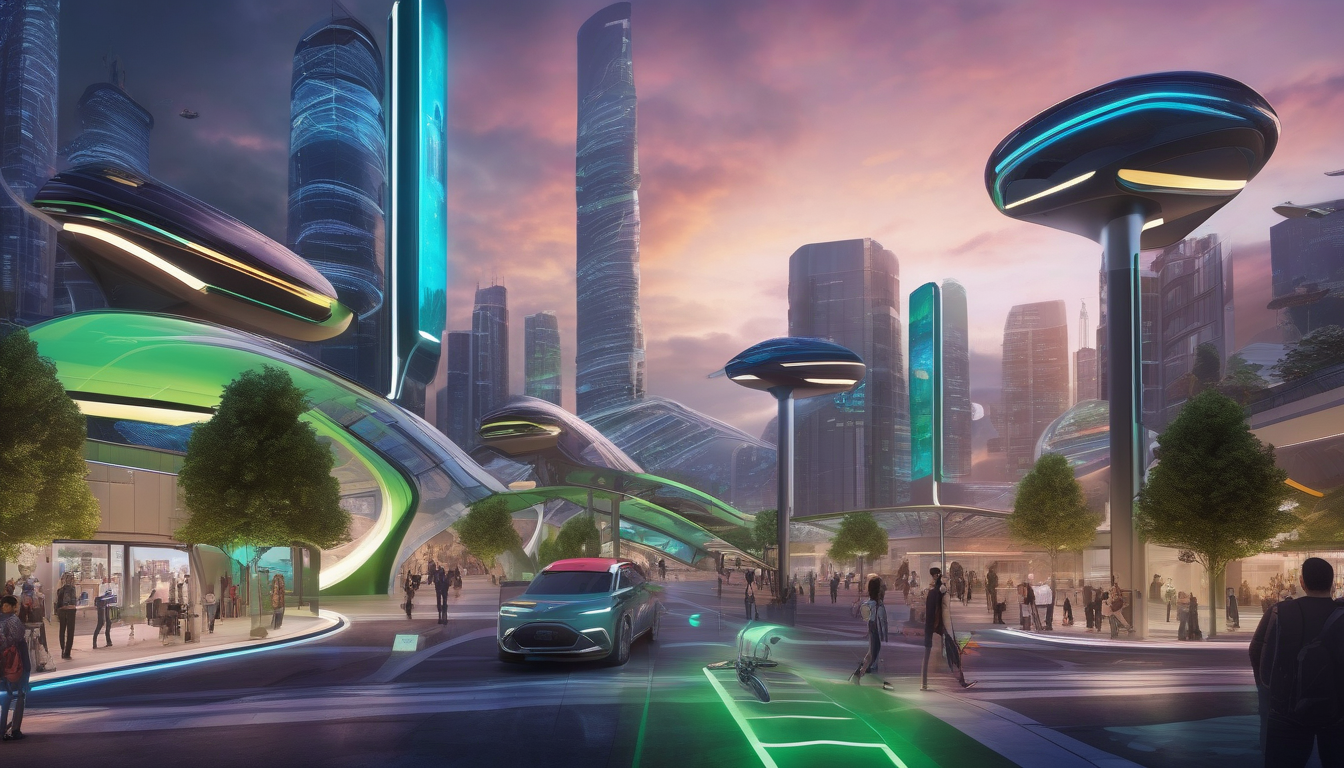
The Rise of Smart Cities
Smart cities are not just a futuristic concept; they are rapidly becoming a reality in urban landscapes around the globe. As cities grow and face challenges such as traffic congestion, pollution, and resource management, the integration of technology becomes essential. The rise of smart cities is driven by a combination of factors that aim to enhance efficiency and sustainability, ultimately improving the quality of life for residents.
One of the primary catalysts for this transformation is the increasing urban population. According to the United Nations, by 2050, nearly 68% of the world’s population is expected to live in urban areas. This surge creates immense pressure on city infrastructure, prompting the need for innovative solutions. Smart cities leverage Artificial Intelligence (AI) and the Internet of Things (IoT) to create a more interconnected and responsive urban environment.
Additionally, the growing awareness of environmental issues has fueled the push for sustainability in urban planning. Cities are adopting smart technologies to reduce their carbon footprint and promote greener living. For instance, smart energy management systems help optimize energy consumption, while IoT sensors monitor air quality and waste levels, enabling more efficient resource allocation. The benefits of these advancements are profound:
- Enhanced Efficiency: Smart cities streamline operations, from traffic management to public services, ensuring that resources are used optimally.
- Improved Quality of Life: Residents enjoy better services, reduced congestion, and increased safety through technology-driven solutions.
- Environmental Sustainability: By integrating green technologies, cities can significantly lower their environmental impact.
Moreover, the economic benefits cannot be overlooked. Investing in smart city technologies can lead to job creation and increased economic activity. As cities become more attractive to businesses and residents alike, they foster a thriving environment that encourages innovation. In essence, the rise of smart cities represents a paradigm shift in how we approach urban living, making it not only more efficient but also more sustainable and enjoyable.

Key Technologies Driving Transformation
The transformation of urban environments into smart cities is largely powered by cutting-edge technologies, with Artificial Intelligence (AI) and the Internet of Things (IoT) leading the charge. These technologies are not just buzzwords; they are the backbone of innovative solutions that address the complexities of modern urban living. Imagine a city where traffic lights adjust in real-time based on traffic flow, or where waste bins signal when they need to be emptied. This is not science fiction; it’s the reality being crafted by AI and IoT.
AI is revolutionizing urban management by offering predictive insights that help city officials make data-driven decisions. For instance, city planners can utilize AI algorithms to analyze demographic trends and environmental data, allowing them to allocate resources more efficiently. This capability means that cities can adapt to the needs of their residents more swiftly and effectively. Moreover, AI enhances public safety through advanced surveillance systems that detect unusual activities, ensuring a safer urban environment.
On the other hand, IoT serves as the connective tissue of smart cities. By embedding sensors in various urban infrastructures—from streetlights to public transport vehicles—cities can collect and share data seamlessly. This network of connected devices facilitates real-time monitoring and management of city services. For example, smart traffic systems can communicate with vehicles to optimize routes, reducing congestion and minimizing travel times. The integration of these technologies leads to a more responsive and efficient urban ecosystem.
Let’s take a closer look at some specific applications of these technologies:
- Smart Traffic Management: AI algorithms analyze traffic patterns to optimize flow and reduce congestion.
- Environmental Monitoring: IoT sensors track air quality and noise levels, providing data that helps cities address pollution.
- Public Safety Enhancements: AI-driven analytics improve emergency response times and crime prevention strategies.
In summary, the integration of AI and IoT is not just enhancing city operations; it’s fundamentally transforming the way urban environments function. As these technologies continue to evolve, the potential for smarter, more sustainable cities is limitless. The future of urban living is bright, and it’s powered by the innovations that are shaping our cities today.
Artificial Intelligence in Urban Planning
In the bustling realm of urban development, artificial intelligence (AI) is not just a buzzword; it’s a game changer. Imagine a city where planning decisions are backed by data-driven insights rather than mere intuition. That’s the magic of AI in urban planning. By analyzing vast amounts of data, AI tools empower city planners to make informed choices that enhance sustainability and efficiency.
One of the key benefits of AI in urban planning is its ability to predict future needs and trends. For instance, AI can analyze demographic data, traffic patterns, and environmental factors to forecast how a neighborhood might evolve over the next decade. This predictive capability allows planners to allocate resources more effectively, ensuring that infrastructure keeps pace with growth. Think of it as having a crystal ball that not only shows you the future but also provides actionable insights.
Moreover, AI can streamline the decision-making process. Traditionally, urban planning involved lengthy discussions and debates, often leading to delays. However, with AI, planners can quickly simulate various scenarios and outcomes based on different variables. This means they can identify the best course of action in a fraction of the time. For example, if a city is considering a new public transport route, AI can assess factors like population density, existing traffic conditions, and even environmental impact to suggest the most efficient path.
To illustrate the impact of AI on urban planning, let’s look at a few specific applications:
- Resource Allocation: AI helps in determining where to place parks, schools, and public facilities based on population needs.
- Smart Zoning: AI analyzes land use patterns to recommend zoning changes that promote better urban density and reduce sprawl.
- Emergency Preparedness: By predicting areas at risk during natural disasters, AI aids in creating safer urban environments.
In conclusion, the integration of AI in urban planning is revolutionizing how cities are designed and managed. It not only enhances the quality of life for residents but also promotes sustainable development practices that are crucial for the future. As more cities embrace these technologies, we can expect to see smarter, more resilient urban environments emerge.
Predictive Analytics for Traffic Management
Imagine driving through a city where traffic jams are a thing of the past. Sounds like a dream, right? Well, with the advent of predictive analytics powered by artificial intelligence, this dream is becoming a reality. These advanced systems analyze vast amounts of data from various sources, such as traffic cameras, sensors, and even social media, to forecast traffic patterns. By predicting when and where congestion will occur, city planners can implement strategies to alleviate potential bottlenecks before they happen.
For instance, during peak hours, predictive analytics can adjust traffic signals dynamically, ensuring that vehicles flow smoothly through intersections. This not only reduces commute times but also lowers emissions, contributing to a healthier environment. Additionally, these systems can provide real-time updates to drivers through mobile apps, suggesting alternative routes to avoid congestion. It’s like having a personal traffic assistant guiding you through the urban jungle!
Moreover, the benefits extend beyond just individual drivers. Public transportation systems also gain from predictive analytics. By analyzing ridership data, transit authorities can optimize bus and train schedules, ensuring that services are available when and where they are needed most. This leads to more efficient public transport, encouraging more people to leave their cars at home.
To illustrate the impact of predictive analytics on traffic management, consider the following table:
| Feature | Impact |
|---|---|
| Dynamic Traffic Signal Control | Reduces wait times at intersections |
| Real-Time Traffic Updates | Helps drivers avoid congested areas |
| Public Transport Optimization | Improves efficiency and reduces overcrowding |
As cities continue to grow, the integration of predictive analytics into traffic management systems will be crucial. It’s not just about getting from point A to point B anymore; it’s about making urban travel smarter, safer, and more efficient. So, the next time you’re stuck in traffic, remember that technology is working behind the scenes to make your journey smoother!
AI-Enhanced Public Safety
In a world where urban environments are bustling with activity, ensuring the safety of residents has become a top priority for city planners. Enter artificial intelligence (AI), a game-changer in the realm of public safety. Imagine a city where the streets are monitored by intelligent systems that can detect unusual behavior and alert authorities in real-time. This is not just a futuristic dream; it is happening right now in many smart cities across the globe.
AI technologies are revolutionizing the way we approach public safety. For instance, surveillance systems equipped with AI can analyze video feeds to identify potential threats, such as suspicious gatherings or individuals acting erratically. These systems use advanced algorithms to differentiate between normal activities and those that may require intervention. By doing so, they can significantly reduce the response time of law enforcement, making cities safer for everyone.
Moreover, AI is enhancing emergency response strategies. When an incident occurs, AI-driven systems can assess the situation and prioritize dispatch based on urgency and location. This means that in a critical moment, the right resources are deployed faster than ever before. For example, if there’s a fire in a densely populated area, AI can ensure that firefighters are on the scene within minutes, potentially saving lives and property.
Another fascinating application of AI in public safety is in crime prevention. By analyzing data from various sources—such as police reports, social media, and community feedback—AI can identify crime hotspots and predict where incidents are likely to occur. This predictive policing approach allows law enforcement agencies to allocate resources more effectively, potentially preventing crimes before they happen. Here’s how it works:
| Data Source | AI Analysis | Outcome |
|---|---|---|
| Police Reports | Trend Analysis | Identifying hotspots |
| Social Media | Sentiment Analysis | Community concerns addressed |
| Community Feedback | Pattern Recognition | Proactive measures taken |
In summary, AI-enhanced public safety is transforming urban life by making cities more secure and responsive. With the integration of these advanced technologies, residents can feel a sense of reassurance knowing that their safety is being prioritized through innovative solutions. As we continue to embrace the potential of AI, the future of urban safety looks brighter than ever.
Internet of Things (IoT) Applications
The Internet of Things (IoT) is revolutionizing urban landscapes, seamlessly connecting various systems to enhance the quality of life in smart cities. Imagine a city where everything from streetlights to waste bins communicates with each other, creating a harmonious ecosystem that responds to the needs of its residents. This interconnectedness not only improves efficiency but also fosters a sense of community, making daily life more convenient and enjoyable.
One of the most significant applications of IoT in smart cities is in smart transportation. With real-time data from connected vehicles and infrastructure, city planners can monitor traffic patterns and adjust signals dynamically to alleviate congestion. For instance, if a major event is happening downtown, the system can reroute traffic to minimize delays, ensuring that residents and visitors can navigate the city with ease. This is just one example of how IoT is enhancing urban mobility.
Furthermore, IoT plays a critical role in environmental monitoring. Sensors placed throughout the city can track air quality, noise levels, and even temperature changes. This data is invaluable for city officials as they work to create healthier living conditions. For example, if air quality drops below a certain threshold, alerts can be sent to residents, advising them to limit outdoor activities. This proactive approach not only helps safeguard public health but also encourages community engagement in environmental issues.
Additionally, IoT applications extend to smart waste management. By equipping waste bins with sensors that monitor fill levels, cities can optimize collection routes and schedules. Instead of following a fixed route regardless of need, garbage trucks can be dispatched only when bins are full, reducing fuel consumption and operational costs. This innovative approach not only enhances efficiency but also contributes to a cleaner urban environment.
To summarize, the integration of IoT in smart cities is paving the way for a future where urban living is more efficient, sustainable, and connected. As technology continues to evolve, the potential applications of IoT are boundless, promising a transformative impact on how we experience city life.
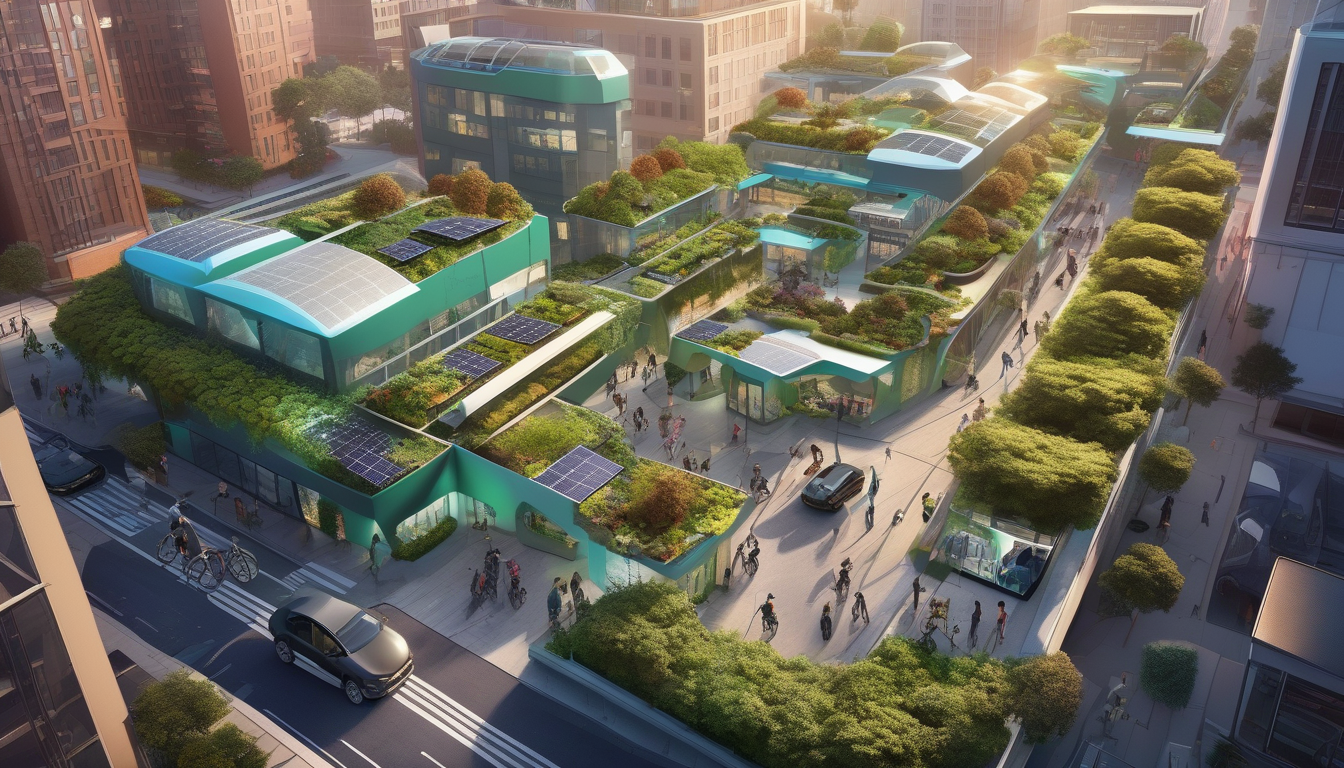
Sustainability Initiatives in Smart Cities
In an age where urbanization is skyrocketing, sustainability has become a cornerstone of smart city initiatives. Cities are now leveraging cutting-edge technology to not only enhance the quality of life for their residents but also to protect our planet. Imagine a city where energy consumption is optimized, waste is minimized, and green spaces are flourishing. This is not just a dream; it’s the reality that smart cities are striving to achieve.
One of the most exciting aspects of these initiatives is how they integrate renewable energy sources into the urban fabric. Smart grids, powered by IoT devices, allow for real-time monitoring and management of energy consumption. This means that cities can harness solar and wind energy more effectively, reducing reliance on fossil fuels. For instance, a smart city might deploy solar panels on rooftops while using AI algorithms to predict energy demand, ensuring that energy is used efficiently.
Moreover, waste management is undergoing a revolutionary transformation. Traditional waste collection methods are often inefficient and costly. However, with the introduction of smart bins equipped with sensors, cities can optimize waste collection routes based on real-time data. This not only saves fuel but also reduces the carbon footprint associated with waste disposal. Imagine walking through a neighborhood where trash is picked up only when necessary, leading to cleaner streets and a healthier environment.
Another crucial initiative is the promotion of green transportation. Smart cities are investing in electric vehicle (EV) infrastructure, such as charging stations, and implementing bike-sharing programs. These efforts encourage residents to opt for more sustainable modes of transport, reducing traffic congestion and air pollution. In fact, studies show that cities with robust bike-sharing programs see a significant decrease in vehicular traffic, which leads to lower emissions and healthier air quality.
As we look toward the future, the integration of smart technologies in urban settings is not just about convenience; it’s about creating a sustainable ecosystem that benefits everyone. Smart cities are paving the way for a greener tomorrow, where technology and nature coexist harmoniously. With initiatives focused on energy management, waste reduction, and sustainable transportation, the urban landscape is set to transform for the better.
Smart Energy Management
In the quest for a more sustainable future, systems are stepping into the spotlight, revolutionizing how cities consume and manage energy. Imagine a city where energy flows seamlessly, reducing waste and maximizing efficiency—this is the promise of smart energy management. By leveraging advanced technologies like AI and the Internet of Things (IoT), urban areas can significantly lower their energy consumption while integrating renewable resources into their grids.
Smart energy management systems utilize real-time data analytics to monitor energy usage across various sectors, from residential buildings to public infrastructure. These systems can identify patterns in energy consumption, allowing city planners and energy providers to make informed decisions. For instance, during peak hours, the system can suggest alternative energy sources or even adjust pricing to encourage usage during off-peak times. This demand-response strategy not only helps in stabilizing the grid but also promotes energy conservation among residents.
Furthermore, smart meters equipped with IoT technology enable consumers to track their energy usage in real-time. This transparency empowers individuals to make smarter choices about their energy consumption, leading to reduced bills and a smaller carbon footprint. Imagine being able to see how much energy your appliances consume at any moment; this knowledge can inspire changes in behavior that contribute to a more sustainable lifestyle.
To illustrate the impact of smart energy management, consider the following table that outlines key benefits:
| Benefit | Description |
|---|---|
| Energy Efficiency | Reduces overall energy consumption through better resource management. |
| Cost Savings | Lower energy bills for consumers and reduced operational costs for businesses. |
| Environmental Impact | Decreases greenhouse gas emissions by promoting renewable energy sources. |
| Grid Stability | Enhances the reliability of energy supply through real-time monitoring and adjustments. |
In conclusion, smart energy management is not just a technological advancement; it’s a crucial step toward creating sustainable urban environments. By integrating AI and IoT, cities can transform their energy systems, benefiting both the economy and the environment. As we embrace these technologies, we pave the way for a greener, more efficient future.
Waste Management Innovations
In today’s rapidly urbanizing world, the challenge of waste management is more pressing than ever. As cities grow, so does the volume of waste they generate. However, are at the forefront of transforming how cities handle refuse, making processes more efficient and sustainable. By leveraging cutting-edge technologies, cities can not only reduce waste but also enhance recycling efforts, ultimately contributing to a cleaner environment.
One of the most exciting advancements in this field is the use of smart bins. These bins are equipped with sensors that monitor fill levels, allowing for optimized collection routes. Imagine a garbage truck that only travels to bins that are full! This not only saves fuel and reduces emissions but also ensures that waste is collected in a timely manner, preventing overflow and littering. Moreover, smart bins can communicate with waste management systems to provide real-time data, enabling better decision-making and resource allocation.
Another innovation making waves is the integration of AI-driven analytics. By analyzing data from various sources, cities can identify patterns in waste generation and disposal. This information is invaluable for crafting targeted recycling programs and public awareness campaigns. For example, if a neighborhood is identified as a high waste generator, city officials can implement educational initiatives to encourage recycling and composting. The result? A significant reduction in landfill contributions.
Additionally, many cities are adopting automated waste collection systems. These systems utilize robotics and AI to streamline the collection process, minimizing human intervention. Not only does this reduce labor costs, but it also enhances safety for workers by minimizing their exposure to hazardous waste. In some cases, these robots can even sort recyclables from regular waste, ensuring that valuable materials are not lost.
To further illustrate the impact of these innovations, consider the following table that highlights key benefits:
| Innovation | Benefits |
|---|---|
| Smart Bins | Optimized collection routes, reduced emissions, timely waste collection |
| AI-Driven Analytics | Data-driven decision making, targeted recycling programs, public awareness |
| Automated Collection Systems | Reduced labor costs, enhanced safety, improved sorting of recyclables |
In conclusion, waste management innovations are not just about keeping our streets clean; they are about creating a sustainable future for our urban environments. By embracing these technologies, cities can tackle the waste crisis head-on, paving the way for a greener, more efficient world.
Frequently Asked Questions
- What are smart cities?
Smart cities are urban areas that leverage technology, particularly AI and IoT, to enhance the quality of life for residents. By integrating various systems, these cities aim to improve efficiency, sustainability, and overall urban living.
- How does AI contribute to urban planning?
AI helps city planners by analyzing vast amounts of data to optimize resource allocation. This means better decision-making for sustainable development, ensuring that cities can grow while minimizing environmental impact.
- What role does IoT play in smart cities?
IoT devices connect different systems within a city, allowing for real-time data sharing and improved management. This connectivity enhances services like traffic management, waste collection, and energy use, making urban living more efficient.
- How can smart cities improve public safety?
AI technologies enhance public safety through advanced surveillance systems, emergency response optimization, and crime prevention strategies. This means quicker responses to incidents and a safer environment for residents.
- What sustainability initiatives are found in smart cities?
Smart cities focus on sustainability by implementing initiatives like smart energy management systems and innovative waste management solutions. These efforts aim to reduce environmental impact and promote greener urban living.
- How do smart energy management systems work?
These systems utilize IoT and AI to monitor and control energy consumption in real-time. By optimizing energy use and integrating renewable sources, smart cities can significantly reduce their carbon footprint.
- What innovations are being used in waste management?
Smart technologies, such as sensor-equipped bins and data analytics, optimize waste collection routes and improve recycling processes. This innovation leads to more efficient waste management and a cleaner urban environment.

